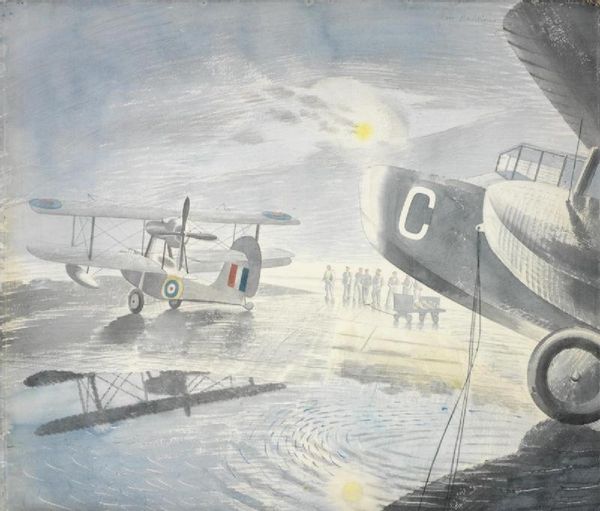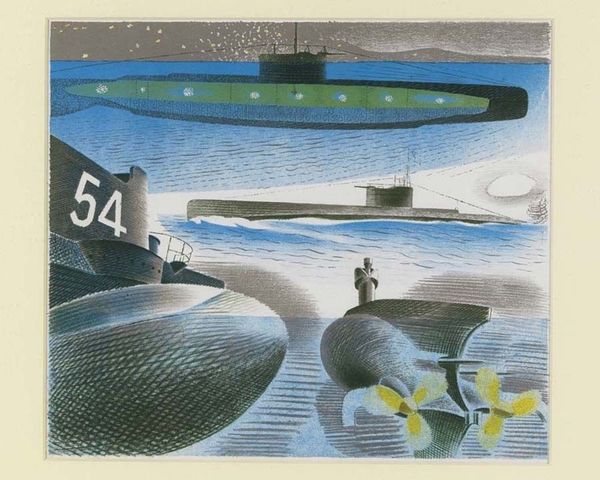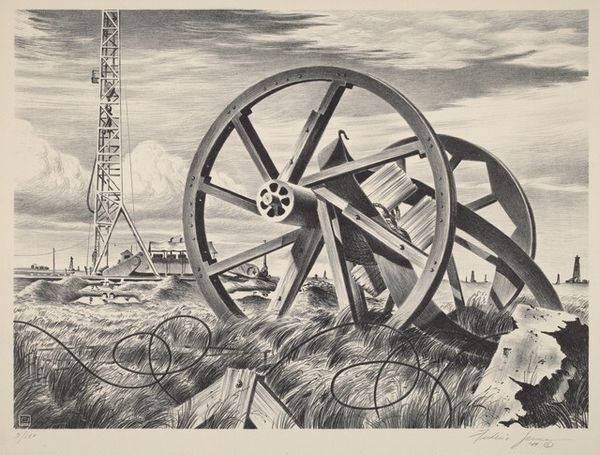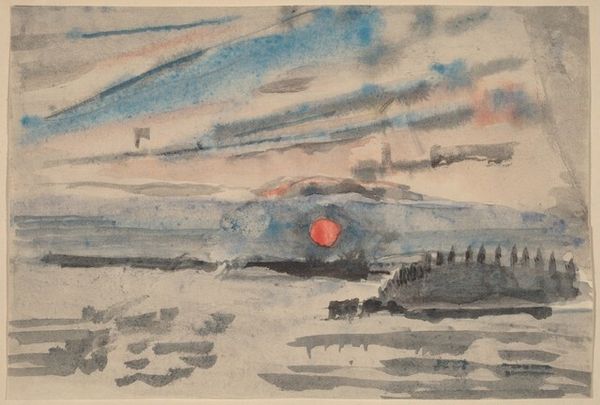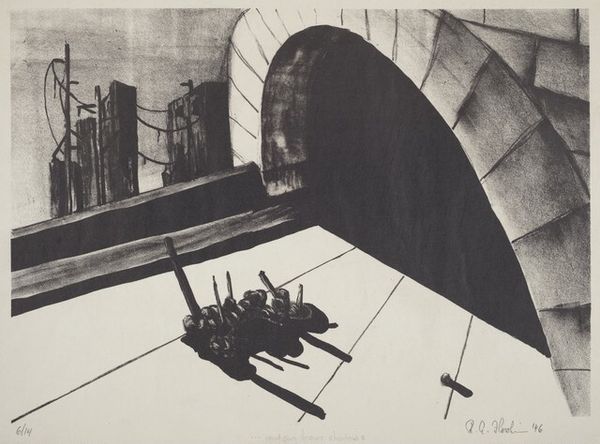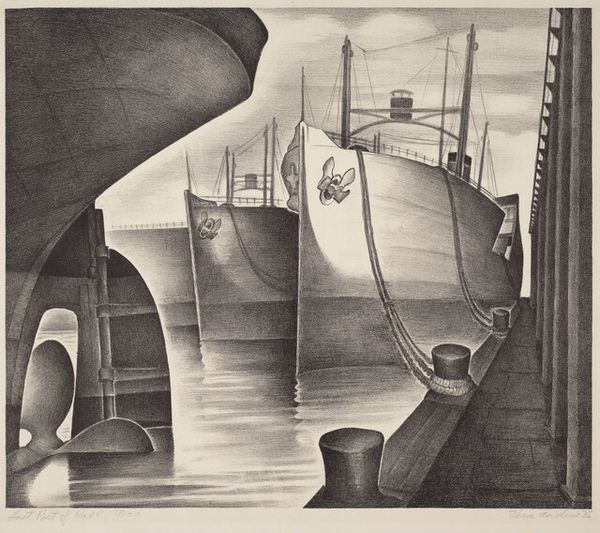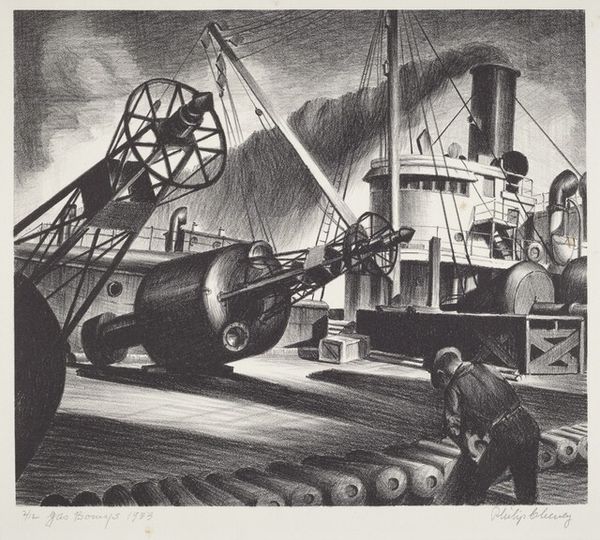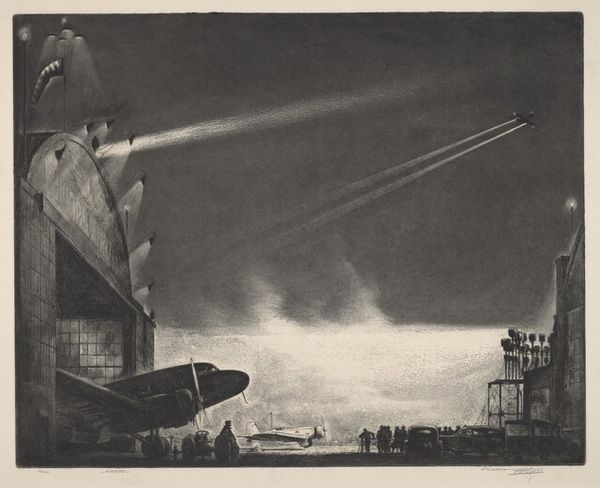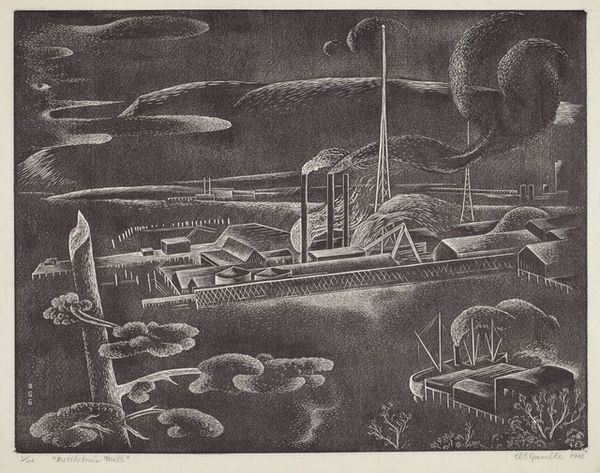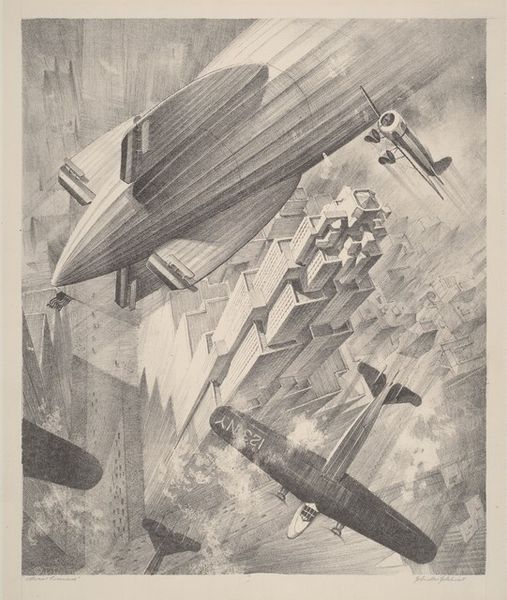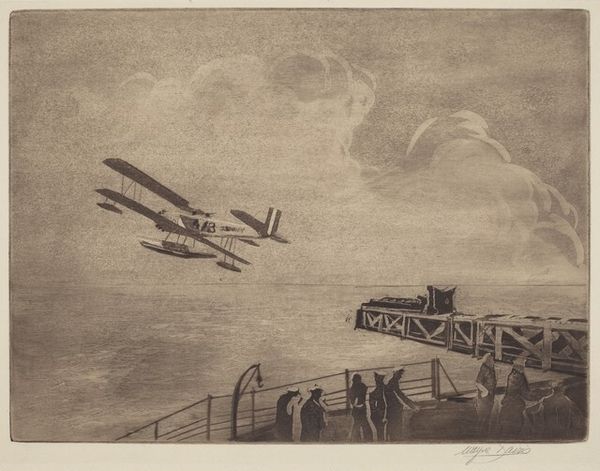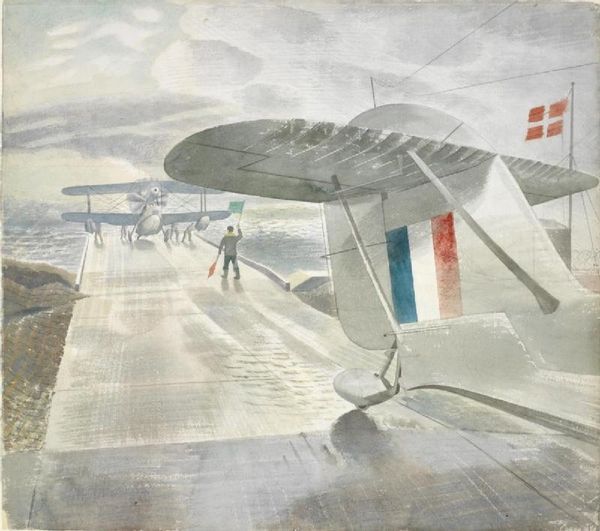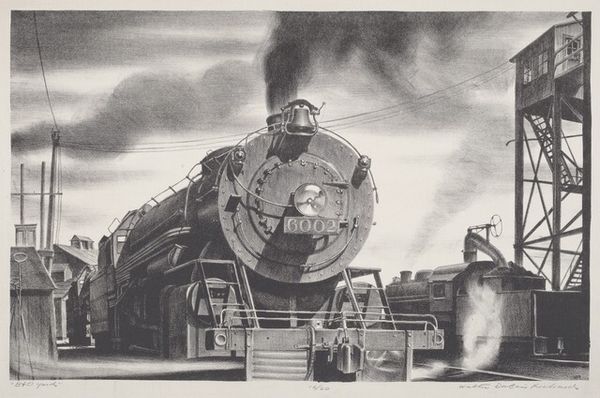
drawing, watercolor
#
drawing
#
ship
#
landscape
#
watercolor
#
coloured pencil
#
line
#
modernism
Copyright: Public domain
Editor: Here we have Eric Ravilious' "Midnight Sun," a 1940 watercolor and pencil drawing depicting a ship at sea. It’s quite a stark scene, very industrial but also serene, focusing on what looks like the deck and gun mount of a warship, contrasted with a stylized sun. What’s your take on this piece? Curator: This artwork immediately directs my thinking towards its context during wartime. The materiality here, the pencil and watercolor on paper, feels almost like a sketch, a document produced rapidly, reflecting the urgency of wartime production. How do the visible processes – the application of color and line – inform the work? What can we infer about its purpose and audience, given its making? Editor: So you see it primarily as a product of its time? I hadn't really considered it beyond its visual impact. What do you mean about it purpose and audience? Curator: I wonder about the labour embedded within this image. It isn't a celebration of heroism, or even the war effort necessarily. Ravilious emphasizes the mundane – the functional aspects of naval equipment. Consider where it was shown, to whom and why? I would argue its social and historical purpose impacts heavily how we can interpet its function. Do you agree with that argument? Editor: I think I see what you're getting at. The focus on the "everydayness" almost makes the piece itself an instrument - maybe of observation or record keeping in that historical context. That impacts the viewer differently if the work has practical functions to it, as opposed to a purely artistic statement. Curator: Exactly. We consider the act of its making in the face of war: rationing, potential material shortages, labour division...these material conditions bleed directly into our understanding and appreciation of the image and our personal reactions to it. Editor: I didn't initially connect it that way, but understanding it through the lens of production and circumstance definitely adds layers of meaning to Ravilious’ work. It really is fascinating when you consider those angles of the image and how they are inevitably tied into it’s history. Thanks for that explanation!
Comments
No comments
Be the first to comment and join the conversation on the ultimate creative platform.
